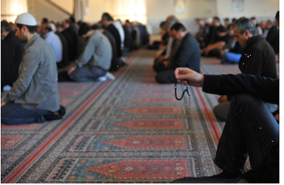Associations and Mosques

The vast Number of mosques and the numerous members of Muslim umbrella associations underline the importance and centrality of religious associations for Muslim migrants. These instituttions can't be ignored when it comes to the topic of migration. Mosques are no out-and-out sacral facilities, they have gained a profane character in the process of migration and integration. As community rooms they serve their members for different social activities.
Whereas the founding of a prayer room was probably the main aspect of various muslim associations in the beginning, the buildings developed into multicultural centers. Beside the five daily prayers, there are also frequent language courses held as well as assistance with homework given to school children in these rooms. Furthermore, Qur'an lessons are held by religious counselors. A lot of women do participate in these lessons.
Some of the associations have specific agendas which are designed for special target groups, for example students, women, children and youth. The tasks range from education, to social- and aid programmes. Even nursery schools are run by various muslim associations.
Research on the topic of religiosity among muslim youth has schown, that Islam has a strong identificational character for them and is a strong influence on their everyday life ( Gensicke, 2002; Kelek, 2002). In contrast to the first generation of migrants, a critical, selective adoption of norms and values takes place. The question, whether the process of integration continues to be successful, relies on internal external factors, such as the ressources of the mosque, the degree of openness and willingness to participate in the host society as well as the symbols of the association. The internal factors are strongly connected to the role of the imam, who traditionally has a strong influence on his community. His pedagogic and religious qualifaction as well as his social position among the members of the community will influence this process in the future tremendously (Kalisch, 2005, 47ff). Therefore, the role of the imam and his influence on the mosque-society are to be analyzed specifically.
Read more: www.islam-landkarte.at
Dr.-Karl-Lueger-Ring 1
1010 Vienna





